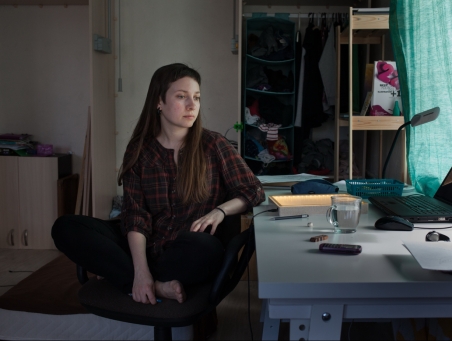Building Trust in a Fragmented World

Like dessert after a balanced meal, foreign news reporting has always depended on a judicious mix of lighter material to draw in a wide audience.
That mix used to be organized by editors who ensured that the stories they considered important were always on the front page. Now new gatekeepers are challenging that hegemony. While television is still the most popular news platform, aggregators, search engines and social media are increasingly interposing themselves between editors and audiences. Professional journalists produce the vast bulk of the news, but they no longer have so much control over the way in which it is viewed.
The new social editors are sometimes the audience members themselves. Social blogging sites like Tumblr and news aggregators tailored to the preferences of their readers allow a degree of control that ensures, for example, that those who are interested in a specific foreign news story will be able to follow it obsessively. But specificity is also a problem. If your news feeds are all about Syria or Ukraine, you might not find out about the closure of your local hospital.
This post is a result of the 2015 n-ost Media Conference, "Translating Worlds," which took place in November 2015. For more essays on foreign reporting and theses on photojournalism, please see the brochure below, or visit our website on the conference.
Conversely, if you are mainly interested in sports or music, you may not even realize that there is a war in Ukraine. Selected feeds are deep but narrow.
Reported, but rarely seen
Algorithm-based news feeds of the kind used by Facebook are also very selective. Although more and more news organizations are distributing stories via Facebook, a report on the Monday Note in February this year found that, on average, Facebook members actually see only about 6 percent of the posts available to them. Determining which of the thousands of news stories they read stems from a computerized best-guess about their preferences, based on their friends and the subjects they follow.
In a 2013 study by researchers Pablo Boczkowski and Eugenia Mitchelstein, it was found that people are typically most likely to click on “non-public-affairs stories told in a straight news style.” Facebook follows such preferences and serves the majority of users relatively soft news alongside pictures of family and friends.
This is not good news for journalists who are trying to build audiences for serious foreign stories via social media. The chances are your work will never make it unless there is a significant local or personal angle. So, for example, the Paris attacks in November 2015 were soon trending online, whereas attacks in Beirut and Kenya were reported but rarely seen in other countries.
Boczkowski and Mitchelstein also found that people are most likely to comment on stories they consider controversial. So active users, who post, share and comment get news that is inflected to their particular prejudices. A study by Oxford statistician Emma Pearson found that the conversations about rioting in Ferguson, Missouri—which became a massive international story on Twitter—were completely divided between conservative pro-police and liberal pro-protest supporters with virtually no overlap.
Boczkowski and Mitchelstein also found that people are most likely to comment on stories they consider controversial. So active users who post, share and comment get news that is inflected to their particular prejudices. A study by Oxford statistician Emma Pearson found that the conversations about rioting in Ferguson, Missouri—which became a massive international story on Twitter—were completely divided between conservative pro-police and liberal pro-protest supporters with virtually no overlap.
On Facebook, Ferguson barely showed up at all. Social media’s tendency to reflect and amplify behavior is contributing to the growing polarization between news junkies and news avoiders that has been observed by researchers. It may also be contributing to growing political polarization between political parties and between interpretations of events viewed by different groups of people.
‘Social editing,’ and building trust
In countries where levels of trust in the news media are low and the use of social media as a news source is high, this form of ‘social editing’ is likely to be more widespread. In the most recent research by the Oxford Reuters Institute, the number of people saying they trust the news media was below 50 percent in eight out of the 18 countries surveyed. For journalists reporting on stories they consider to be of public or international importance, this fragmented landscape presents challenges. No longer are journalists simply trying to find stories, research and then write them. They have to consider who will be reading them and in what context.
Many journalists are encouraged to ‘sell’ their stories on social media to try and increase audiences. The temptation is to play to the commercial requirements of this complex and changing news field by ramping up the controversial nature of the subject matter in a bid for hits. While this has short-term benefits (it is satisfying when your story is trending), it may also be further eroding trust. Without trust, it is very difficult to encourage audiences to read beyond their prejudices and perhaps change their minds.
The good news is that in high-trust countries with established public broadcasters and high-quality newspapers, the traditional news media seem to be holding their own against the platform intermediaries. Here, the traditional news media have adapted well to online delivery and seem to be maintaining their audiences online alongside TV and social media. In low-trust countries, like the USA, newspapers are losing their audiences both online and off-line. Broadcasters are doing better, but lag behind the audience loyalty in high-trust countries.
The lesson here seems to be that news outlets that resist the temptation to polarize and instead focus on building up levels of trust, are likely to do best in the long run. Building up trust means taking a risk and demonstrating to your readers that there are many different opinions on any given subject. The Internet provides the opportunity to link to anything, and news organizations that are prepared to connect readers to the source documents for their stories are the ones who are most likely to build trust.
Few news organizations do link away from their own material for fear of losing their audiences. But the ones they lose today may well become the people who come back to them tomorrow. When trust is at a premium, it becomes something worth banking on.
The 2015 n-ost Media Conference, "Translating Worlds," yielded five essays on the challenges facing today's foreign correspondent, as well as a series of seven photo-theses concerning modern photojournalistic practice. The complete works can be found in this brochure.

